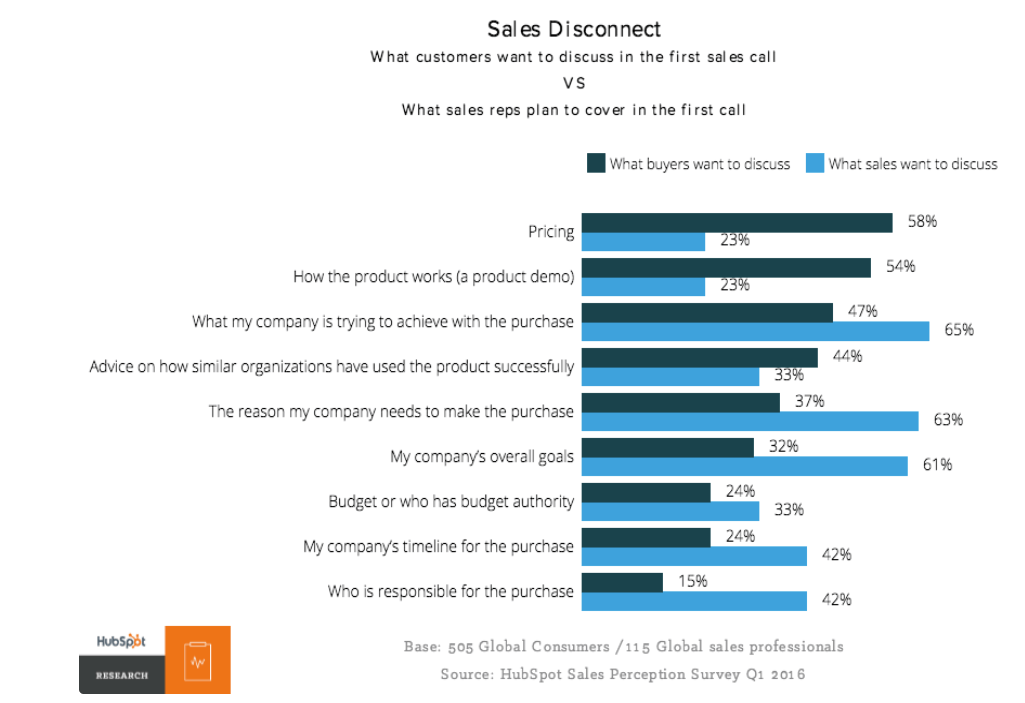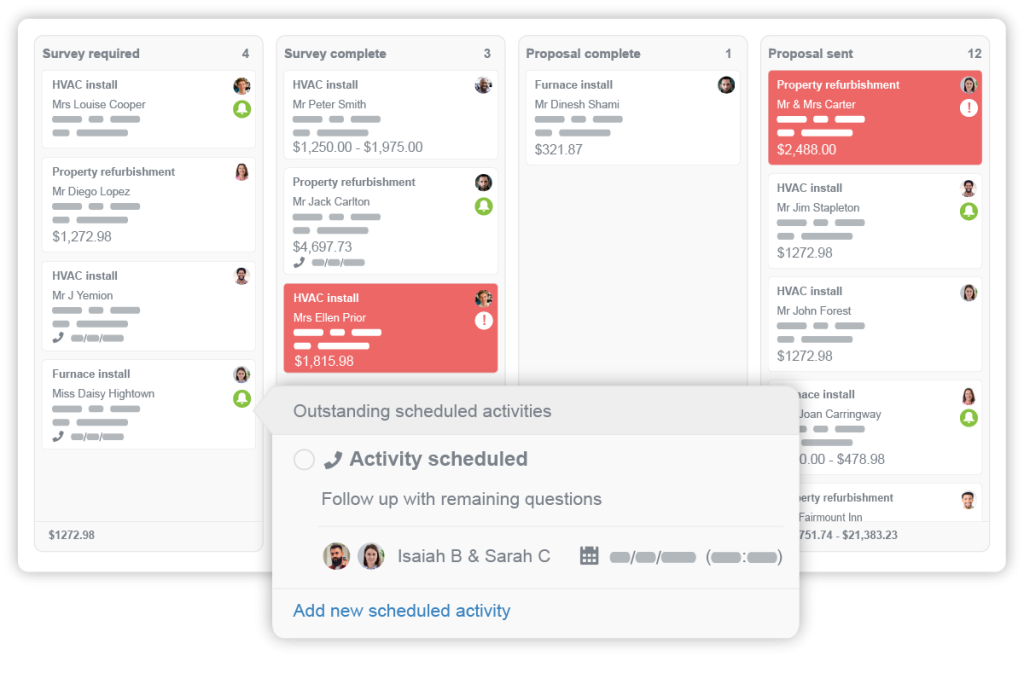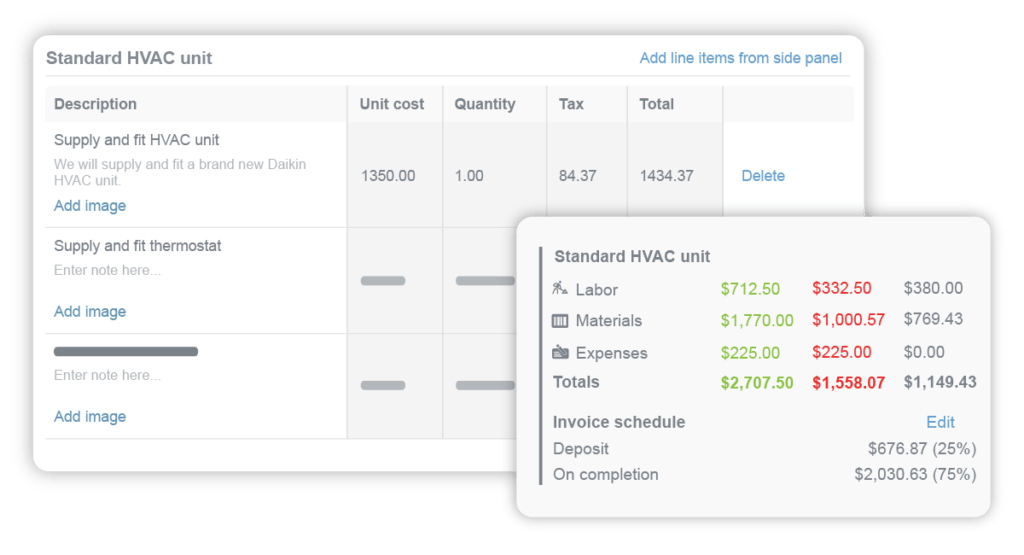No one likes a pushy salesperson. It’s a truth universally acknowledged.
This means learning how to ask for the sale without being pushy is an essential skill…
For salespeople though, who have looming quotas and commissions in limbo, making the sale is the top priority. Having the best sales CRM isn’t enough, in this case it’s all about how you ask for the sale.
We’ve broken it down into three simple steps. Read on to find out all about it!

Why should you ask for the sale without being pushy?
You might be thinking, being persistent isn’t always bad. And you’re totally right–it’s not. Because there is a big difference between a “pushy” sales rep and a “persistent” one.
The former can be defined as someone who is excessively self-assertive, they apply pressure to the situation. A persistent rep, on the other hand, simply endures over a long period of time. There’s no forcing the situation, and that can make all the difference.
The Harvard Business Review actually found that buyers rate two-thirds of sales representatives as either average or poor performers. One of the main reasons they listed is that the salesperson was too pushy and couldn’t establish a personal connection.
So, if you want to close more sales, it’s important that you and your field service team ask for the sale without being pushy. It can be a fine line to walk, but it’s achievable.
So let’s dive into the steps that will get you there!
1. Sell without pressure
Sales can be a high burnout profession. It’s high-volume work where there’s typically more rejections than wins. And that can feel discouraging, especially when you know your company’s product and services are top-notch.
But that’s where the mindset of the “pushy salesperson” is created. It’s rooted in the idea that everyone needs your services and that every opportunity should close. And unfortunately, that just isn’t the case.
Of course, you should have full confidence in what you sell. But you also need the awareness that your products and services are not for everyone. That’s why it’s so important to know who your customers are (tip: listen to the voice of the customer!), and to be mindful of who isn’t a good fit for your business.
Ask for the sale, but first detach from the outcome
It’s easier said than done, but if you want to sell more, it’s essential to be indifferent to the outcome. Your end goal should not be to ask for the sale every time. The goal should be to listen to your prospects, understand their needs, and determine if you can provide a solution to their problems.
And if you can’t, that’s okay! Part ways as friends and maintain a good relationship, because who knows, down the line they might have a new problem that can be fixed with your services, or they may even refer friends and family to your business.
On the other hand, if you know they’re not a good fit for your services, but you try to talk them into using your business, it’s most likely going to come across as pushy. And when people feel forced into a situation, they pull away.
So how can you detach from the outcome of a sale? Start by trying these methods recommended by sales trainer Josh Braun:
Switch from expectations to conversations
The first step is eliminating the expectation that every discussion you have with a lead will end in a sale. If that’s your only intention throughout the conversation, it will come across as pushy and ungenuine.
Josh recommends focusing solely on learning about their problem with no ulterior motives. When you’re genuinely curious, your prospects will feel more comfortable and open up more easily. There’s no longer the feeling of something being forced on them and that they need to put their guard up.
When you focus on problem-solving instead of constantly selling, you’ll sell more while simultaneously selling your services to the right people. This means you can expect repeat business from them, and possibly even their referrals!
When you ask for the sale, separate personal rejection from product rejection
If you’re a field service sales representative, our bet is your day-to-day is focused on sales. And when you spend the majority of your week selling, it’s hard to separate yourself from the process.
But when you attach your self-worth to the outcome of a deal, a rejection of your proposal or quote may feel like a rejection of you. And that just isn’t the case.
As Josh puts it, “Prospects don’t reject you as a person. They’re rejecting what you said. Those two things sound similar, but they are two completely different mindsets. Who you are as a person has nothing to do with a sale or a meeting.”
By not attaching your personal worth to the sale, you can detach from it. And when you detach, there’s no longer the need to push prospects into buying from you or using your services.
2. Focus on qualified leads
In a study by The Sales Blog, it was found the #1 word associated with salespeople is “pushy.” Which is not an adjective most of us want to be affiliated with, especially by default because of our profession.
Yet, it takes multiple follow-ups–the average being five to eight–to even get in touch with a lead. So where exactly is the line between “pushy” and “persistent”?
And according to Revenue.io, 42% of salespeople say they struggle to establish urgency when selling. Basically, they find it difficult to get leads to buy now vs later. As a result, 84% of potential buyers say they find salespeople to be “pushy” because of this.
That’s why it’s important to remember the sales process is not linear. Just because a lead is interested, doesn’t mean they’re ready to buy. So if you want to ask for the sale without being pushy, it starts with aligning with your leads intentions and timelines. Not forcing your ideals on them.
Let’s break down what that really means.
If it’s not the time, don’t ask for the sale
Typically when people make big purchases–like investing in A/C for their home or installing a complex security system–they don’t want to buy in a two day period. They might not actually want to buy at all, and instead are just looking at what options are out there.
As salespeople, the objective is to listen to why they need those products and communicate the value they’ll bring. And while it is important to stress the benefits implementing your solution will have, the goal isn’t to pressure prospects into buying.
Take it from expert sales trainer Rudy Uribe Jr! He’s helped field service businesses perfect their selling processes for over 10 years:
Ultimately, when you apply pressure, people get uncomfortable. It makes them want to pull away, and sometimes they become ghosts.
Rather than tell you they really aren’t interested, or it’s just not the time for them to buy, they’d rather disappear than be the one to break the bad news to you.
To avoid this, establish your buyer’s timeline–don’t assume it. Try asking questions like:
If their response shows urgency, it’s time to be persistent in asking for the sale.
On the other hand, if it just isn’t an immediate priority for them, don’t try to push them into buying. Understand their timeline and align with it. Lay out next steps you can take and agree when you should revisit the conversation.
And with that said…
Don’t follow up just to follow up; always add value
If a lead has gone cold (or worse, become a ghost) sending constant “checking in” emails and voicemails most likely won’t get you far. In most cases, it will come across as pushy instead of persistent.
Unfortunately, your prospect knows you’re not genuinely checking in on them, your real motive is to see if they’re ready to buy. And if they’re not, your message is just another one they’ll need to delete from their inbox.
Instead, follow up when you have real value to share with them. Maybe last time you spoke, they weren’t ready to buy because the price was too high. Now it’s been a few months, and your field service business is running a seasonal promotion that you want to share with them. That’s a valuable checking-in message to send.
Of course, remember to switch from expectations to conversations. Just because the price has dropped, doesn’t mean you should expect the sale to close. The goal should be to restart the conversation and see if now is the right time for them.
Sometimes, it really is okay to let a lead go
It can be hard to let leads leave the pipeline, especially if it seemed like they were a great fit. But if they’re no longer responding, or have clearly said they’re not interested, pursuing them will only come across as pushy.
It also isn’t worth your time to chase leads that you know aren’t coming back anytime soon–especially when you have plenty of other opportunities on the table. Chris Voss, FBI hostage negotiator turned business trainer, recommends sending this one-sentence email:
“Have you deferred this project?”
If it’s a “yes” or no response, that’s okay. It simply means you can move forward with the next deal instead of trying to push one that just wasn’t meant to be.
3. Become a consultative salesperson
One of the biggest reasons you might be coming across as a pushy salesperson is because you’re only focused on the sale. Top-performing sales reps, however, aren’t salesy–they’re consultative.
Why? Because no one really likes feeling as if they’ve been sold something. It’s not fun for a potential buyer to want to learn more about your product and services, only to be forced through a drawn-out sales process to get the answers they’re looking for.
Let’s take a look at this chart from HubSpot’s “Buyers Speak Out” study:

It’s clear there’s a disconnect between what sales reps and buyers want to talk about, and that just shouldn’t be the case.
What is consultative selling?
Sales expert Jake Dunlap gives a great approach for reps to take instead:
“If someone reaches out asking about your services, do not say ‘Great, let’s hop on a call to discuss.’ If someone is looking for more information, help them first and then ask them to connect. Don’t go for the hard pitch when someone has a basic question.”
For example, if a customer asks straightaway about the price of your services, don’t give them an evasive answer and instead pivot to your pitch. Not only does it seem shady, but it also reveals that you aren’t their ally in their buying process. It’s an immediate red flag that you want to sell them on something instead of offering the best solution for them.
What do you say when asking for a sale?
In cases like this, explain your pricing to them first. And if they object and say it’s too much, view it as an opportunity to become consultative. Ask them questions like
Why should you do consultative selling instead of being pushy?
Sometimes, you’ll find people don’t actually know their budget for a project. Or they may not have done the research to understand what the average cost of services like yours are. It’s a great opportunity to consult with them and to really discover where their objection is coming from.
Because when you’re a consultant and not a constant seller, sometimes you’ll even find the initial objection wasn’t even the real problem. They might be able to afford the price, they just aren’t confident your business is the right one for them to invest in. And that gives you the opportunity to demonstrate how awesome your services really are.
If you’re knowledgeable and offer real solutions to the problems they’re trying to solve, not only will it be easier to ask for the sale, but you’ll also close more deals. And even if they end up not being a good fit, remember that’s okay too. It’s more important to maintain a relationship than to push a prospect and burn a bridge.
4. Try Commusoft’s Sales CRM
Commusoft Sales has been specifically designed to change how you approach selling and help make your business more profitable.
With its comprehensive set of tools, Commusoft Sales empowers you to develop a seamless sales process dedicated to everything that occurs before you win new work. In no time, you’ll be converting more opportunities into jobs with higher margins every month.
We’re rethinking how businesses approach selling from within their field service management software. You can start to:
Build beautiful proposals
As we mentioned earlier, promoting your brand plays a big part in increasing your success with sales. There’s no reason why this can’t extend to the proposals you send to customers, too.
If you send 10 quotes and only one gets accepted, you’ve wasted 90% of your time.
With our tool, you can create captivating sales proposals that leave a lasting impression.
Our comprehensive and deeply customizable proposal builder enables you to create bespoke, beautiful proposals that get your customer’s attention.
Take control of your sales pipeline and track opportunities
Maximizing sales isn’t always about getting more sales.
Whilst developing our Sales CRM, many installers told us that they don’t have a problem getting job requests. Instead, it’s managing the volume of inquiries that’s the issue.
What if I get too many inquiries and I can’t manage them all?
With that in mind, we’re giving them a solution and providing the best way to take control of your sales pipeline. With Sales, your team can manage every opportunity that comes their way.

Easily track and monitor a prospect’s progress throughout their entire sales journey and use a system that’s designed to optimize engagement.
Teams can follow up with leads quickly and streamline every action: from their first inquiry, right through to the final sale.
Manage your budget and monitor finances
Winning over a customer is only the beginning of the sales journey. When it comes to pricing, there’s a balancing act between maximizing profits and ensuring customers are getting a great and fair deal, too.
After all, profitability plays a huge role in selling well. This means it’s important to know what your revenue opportunities look like at every step of the sales journey.

With Commusoft’s Sales CRM and job management software working together, you have access to all your data: from parts management to prices and labor rates, all within your proposal builder.
As shown above, you can see in real time how much you’re making on each proposal. If you’re tempted to throw in a freebie or a discount to win some customer loyalty, this feature will show you if you can do that without risking making a loss.
After all, you want to earn money for your work, not spend money to work.
By using our Sales CRM, you can track every proposal and see detailed data to help you better understand the financial impact of a job, including the impact of discounts and seeing how much profit you’ll make.
Commusoft Sales gives your business unique ways to push revenue even further, making it easy to cross-sell your services, upsell higher-value parts and installations, and even offer finance. All of this can help to win more customers over to your services.
Track sales performance with reporting tools
Do you want to keep track of your company’s overall sales performance? Are you trying to motivate your sales team to do better? We’ve got you covered there, too!
Evaluate your performance through accurate sales reporting and gain valuable insights so you can monitor KPIs and build reports. Use data to learn and adapt your strategies so you can find even more success:
- Discover how many opportunities you’re winning (and see those you’re missing)
- Identify who’s responsible for selling the most
- See clearly how much you’re earning
Alongside everything else, Sales is designed to make reporting easy.
Commusoft Sales is here to empower your business with a seamless sales tool that’s dedicated to helping you manage selling and win work. You can also download our free guide: Stop Quoting, Start Selling, to kick things off, too!

Cristina Maria
I'm here to bring you next-level strategies to the field service industry. When I'm not working on the best tips to grow your business, I'm on the lookout for sci-fi novels and cookie recipes.









